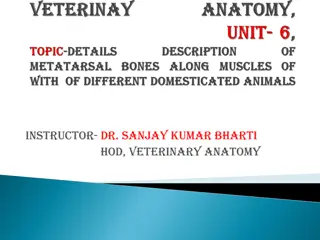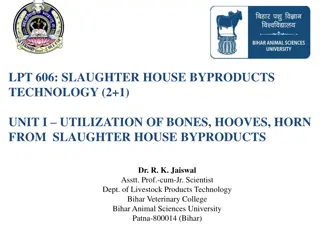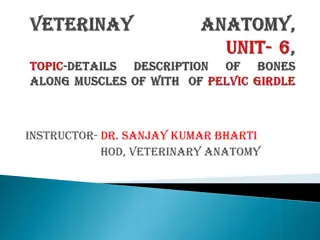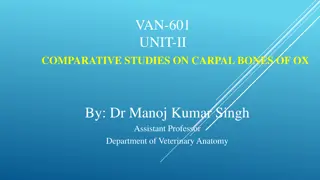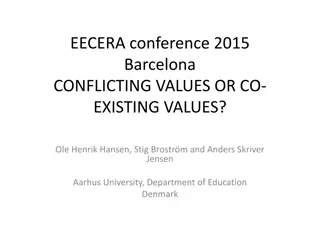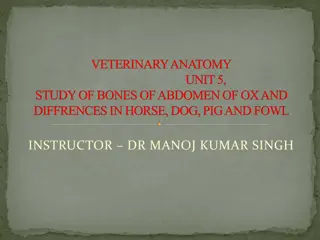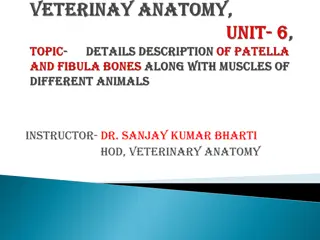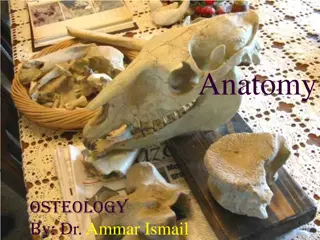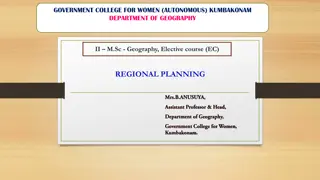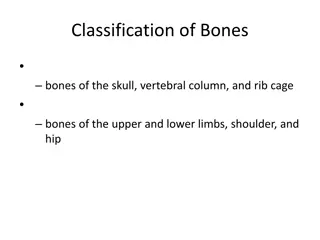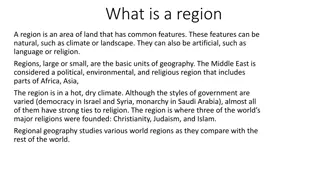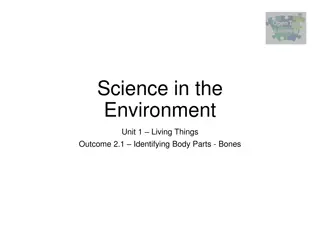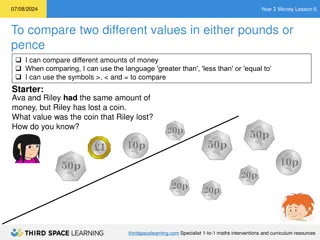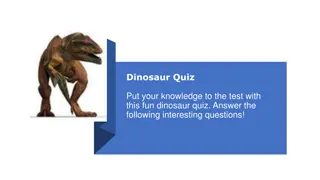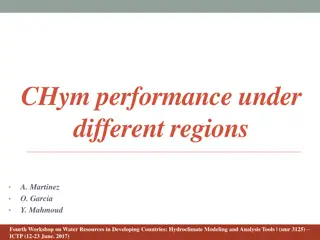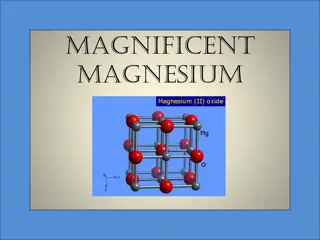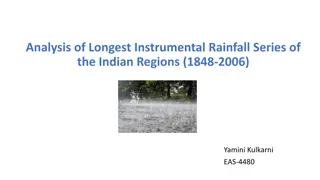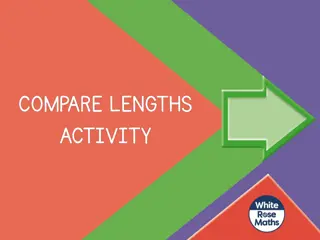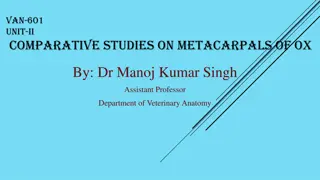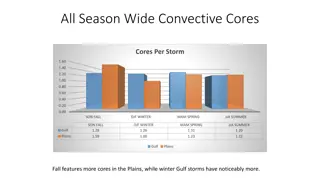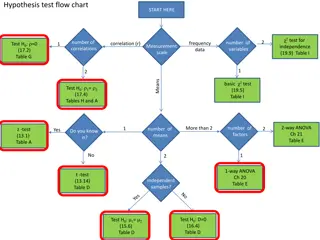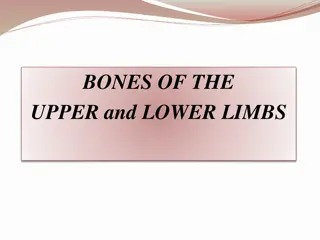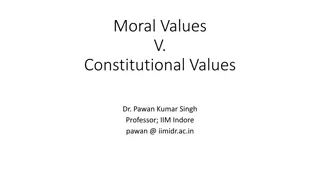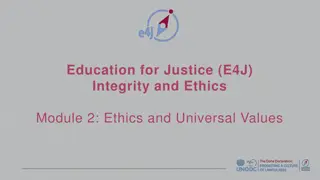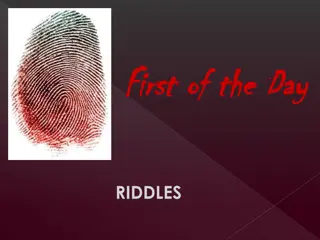Comparing C and pMC Values in Dinosaur Bones: A Study Across Multiple Regions
Results from a study comparing carbon (C) and percent of modern 14C (pMC) values in various bone fractions of dinosaurs across different regions are presented. The study utilized Accelerated Mass Spectrometer (AMS) technology, with samples pre-treated to eliminate contaminants. The findings reveal a range of values for different bone fractions, indicating apparent ages ranging from 22,020 to 39,230 RC years. This research sheds light on the composition and age estimates of dinosaur bones, providing valuable insights into their preservation and fossilization processes.
Download Presentation

Please find below an Image/Link to download the presentation.
The content on the website is provided AS IS for your information and personal use only. It may not be sold, licensed, or shared on other websites without obtaining consent from the author. Download presentation by click this link. If you encounter any issues during the download, it is possible that the publisher has removed the file from their server.
E N D
Presentation Transcript
Carbon-14 in Fossil Carbon, Or, The Missing Presentation Paul Giem Loma Linda University
The Missing Presentation 2012 meeting of the American Geophysical Union and the Asia Oceania Geosciences Society 11-15 August, Singapore http://www.asiaoceania.org/aogs2012/mars2/ timetable.asp
http://www.asiaoceania.org/aogs2012/mars2/pubViewAbs.asp? sMode=session&sId=2&submit=Browse+Abstracts
BG02-A012 A Comparison of 13C & pMC Values for Ten Cretaceous- jurassic Dinosaur Bones from Texas to Alaska Usa, China and Europe Hugh MILLER1#+, Hugh OWEN1, Robert BENNETT1, Jean DE PONTCHARRA2, Maciej GIERTYCH3, Joe TAYLOR1, Marie Claire VAN OOSTERWYCH2, Otis KLINE1, Doug WILDER1, Beatrice DUNKEL1 1Paleo Group, United States, 2Paleo Group, France, 3Paleo Group, Poland #Corresponding author: hugocl4@aol.com +Presenter
[Abstract] Presented here are results of studies comparing C and percent of modern 14C (pMC) for various bone fractions such as residual collagen, in-situ CaC03 (in bioapatite), etc. from eight dinosaurs from TX to AK and one from China. The Accelerated Mass Spectrometer (AMS) was used for 20 of 22 samples primarily at University of Georgia (USA) with Sensitivity 50,000 RC years. All samples were pretreated to remove contaminants. The two large samples were tested on conventional equipment as another cross check.
[Abstract] The 13C range was -20.1 to -23.8 for collagen and - 3.1 to -9.1 for CaC03 with the pMC range of 6.45 to 0.76 which translates to apparent ages of 22,020 50 for CaC03 in a Psittacosaurus from the Gobi Desert to 39,230 140 RC years for CaCO3 in a Triceratops from Montana. Included in this study were an Allosaurus, Acrocanthosaurus, Apatosaurus, two Triceratops and three Hadrosaurs. Documentation will include dinosaur verifications, geological formations, 13C, pMC's, 14C methodologies and laboratories.
[Abstract] When 2g of a Belgium Mosasaur were pretreated to remove contaminants the pMC was 4.68 or 24,600 RC years (Lindgren et al. 2011, PloS ONE, page 9). This Mosasaur age was also concordant with pMC s for dinosaurs from TX to AK and China (no 13C).
[Abstract] 13C values in this study were similar to dinosaur 13C values from the Judith River formation in Alberta, Canada that also reported 15N but not pMC s (Ostrom et al. 1993, Geology, v. 21). Radiocarbon methods are valuable in geochronology (accuracy to 40,000 RC years in varved Lake Suigetsu, Japan). Sediments deposit as function of particle size and density, not time in moving waters so this helps explain pMC s in dinosaur bones (Berthault 2002, Geodesy and Geodynamics 22, China). Primary areas for further fossil studies would be Alberta, Canada, Gobi Desert and Zhucheng, China.
The Missing Presentation The presentation is on YouTube https://www.youtube.com/watch?v=QbdH3l 1UjPQ
The Missing Presentation As a result of comments from attendees at the recent AOGS-AGU (WPGM) meeting in Singapore we have examined your abstract which was delivered in session BG-02.
The Missing Presentation The interpretation which you present in your abstract is that the age of various dinosaurs, previously interpreted as being Mesozoic in age, are less than ~50,000 years. Your report that these ages were calculated using C-14 methods. There is obviously an error in these data. The abstract was apparently not reviewed properly and was accepted in error. For this reason we have exercised our authority as program chairs and rescinded the abstract. The abstract will no longer appear on the AOGS web site.
The Missing Presentation After the AOGS-AGU conference in Singapore, the abstract was removed from the conference website by two chairmen because they could not accept the findings. Unwilling to challenge the data openly, they erased the report from public view without a word to the authors or even to the AOGS officers, until after an investigation. It won't be restored.
Outline of Talk Introduction A brief explanation of how carbon-14 dating works. An explanation of why the Paleo Group s dinosaur data had to be suppressed Other data that support their findings Summary and conclusions.
How Does Carbon-14 Dating Work? Carbon-14 is made in the atmosphere by cosmic rays Atoms are shattered, producing neutrons Neutrons hit Nitrogen-14 and produce Carbon- 14 This production is relatively constant at present
How Does Carbon-14 Dating Work? Carbon-14 mixes in with ordinary carbon, first in the atmosphere, then in the biosphere* Carbon-14 is found throughout the biosphere The concentration of carbon-14 in today s biosphere is approximately 1 part in a trillion (10-12) of ordinary carbon Carbon-14 gradually decays back to N-14
The uniformitarian model The ratio of carbon-14 to ordinary carbon (14C/C ratio) in the atmosphere has always been constant Plants get carbon from the atmosphere with this 14C/C ratio Animals eat plants with this 14C/C ratio When plants and animals die, or plants lay down wood, the carbon-14 starts to decay Carbon-14 decays at an exponential rate If you measure the 14C/C ratio of a dead plant or animal, you can predict when it lived
Formulas for finding age by the uniformitarian model 14C/C = (14C/C)0 e -kt t = ln ((14C/C)0 / 14C/C) / k (where k = ln (2) / t1/2) t1/2 = 5,568 years
Why Did the Paleo Groups Data Have to Be Suppressed? Residual carbon-14 is incompatible with millions of years In 1 million years, the entire earth s weight in carbon-14 would be gone 5.972 1027 g * 6.02 1023 atoms/mole / 14 g/mole 2.568 1050 atoms 167.5 half lives 1,000,000 years / 5730 years/half life =174.5 half lives 167.5 174.5 = 7 At 250,000 years less than an atom per gram C is left
Why Did the Paleo Groups Data Have to Be Suppressed? Residual carbon-14 is compatible with short age What is measured is the 14C/C ratio Less carbon-14 in the past Much more ordinary carbon in the past 4,300 years not unreasonable Residual carbon-14 is incompatible with long ages
A Brief History Residual carbon-14 has been predicted by creationists since at least 1970. Apparent residual carbon-14 has been noted by creationists since at least 1988 I noted published data suggesting residual carbon-14, and called for experiments, in 1997 Andrew Snelling did several dates on his own starting in 1997 I called for testing creationist models in 2000*, and reviewed the literature in 2001
A Brief History The RATE group dated coal samples, and diamonds Baumgardner J, 2005. Carbon-14 Evidence for a Recent Global Flood and a Young Earth. In Radioisotopes and the Age of The Earth: Results of a Young-Earth Creationist Research Initiative, (Volume II), L. Vardiman et al., eds. http://www.icr.org/i/pdf/technical/Carbon-14- Evidence-for-a-Recent-Global-Flood-and-a-Young- Earth.pdf
The RATE Group TX ND MT UT UT AZ KY PA PA IL 0.75 percent modern carbon 0.6 0.45 0.3 0.15 0. Eocene (40 Ma) Cretaceous (100 Ma) Pennsylvanian (300 Ma)
The RATE Group Dated diamond (Precambrian) Appears to be above background ( 2 SD) 0.4 0.3 0.2 0.1 0.
A Brief History Taylor RE, Southon J, 2007. Use of natural diamonds to monitor 14C AMS instrument backgrounds. Nucl. Instr. and Meth. in Phys. Res. B 259:282 287 Available at http://www.scribd.com/doc/182086583/Taylor- Southon-NI-M-B-2007-pdf
The UCI Diamond Data in Chronological Order 0.07 0.0525 Graphite Diamonds Upper C. L. Lower C. L. 0.035 0.0175 0.
A Brief History Rotta published an article on carbon-14 from radium Carbon-14 was measured in natural gas wells The mosasaur data were published The Paleo Group presented its data
Where Are We Now? Carbon-14 is consistently measured in fossil carbon Machine error can be eliminated Nuclear synthesis underground is orders of magnitude too small to account for the data Underground contamination is unrealistic Laboratory contamination is increasingly unrealistic
Where Are We Now? Kirk Bertsche http://www.talkorigins.org/faqs/rate-critique.html While this conclusion explains the higher values for the biological samples in general, it does not account for all the details. Some biological samples do have radiocarbon levels not explainable by sample chemistry. These samples are mostly coals and biological carbonates, both of which are prone to in situ contamination. Unlike the literature values, Baumgardner s coal samples do show significant radiocarbon above background, inviting explanation.
Where Are We Now? Harry Gove, as summarized by Kathleen Hunt ( http://www.talkorigins.org/faqs/c14.html ), states: The short version: the 14C in coal is probably produced de novo by radioactive decay of the uranium-thorium isotope series that is naturally found in rocks (and which is found in varying concentrations in different rocks, hence the variation in 14C content in different coals). Research is ongoing at this very moment.
Where Are We Now? Carbon-14 is consistently measured in fossil carbon Machine error can be eliminated Nuclear synthesis underground is orders of magnitude too small to account for the data Underground contamination is unrealistic Laboratory contamination is increasingly unrealistic Comparison of fossil carbon and some other standard should be attempted The most reasonable hypothesis is that there is residual carbon-14 in fossil carbon
Outline of Talk Introduction A brief explanation of how carbon-14 dating works. An explanation of why the Paleo Group s dinosaur data had to be suppressed Other data that support their findings Summary and conclusions.
What to Expect Don t expect this to get into the peer-reviewed literature Four classes of creationist research Those that make creationism harder to maintain Those that are neutral Those that solve problems for creationism Those that strike at the heart of atheism Those that show the need for an intelligent designer Those that present a strong argument for short age The latter will only get published if someone does not realize the stakes involved
What to Expect One does not have to be venal and cynical to oppose such research being published One only has to know that the opposition can t possibly be right, so there must be some flaw in the research, and that this research will be unfairly damaging if published (and besides, one s opposition resists the truth and is dishonest) Some on the creationist side do this also, so we need to temper our criticism of evolutionists who do it
Where Do We Go from Here? The Paleo Group has been told that they cannot get any more of their samples dated By the University of Georgia lab By a commercial lab I have found the same problem The lab that cooperated with the RATE group, in spite of never being explicitly identified, saw their funding draw up We may have to have our own lab



